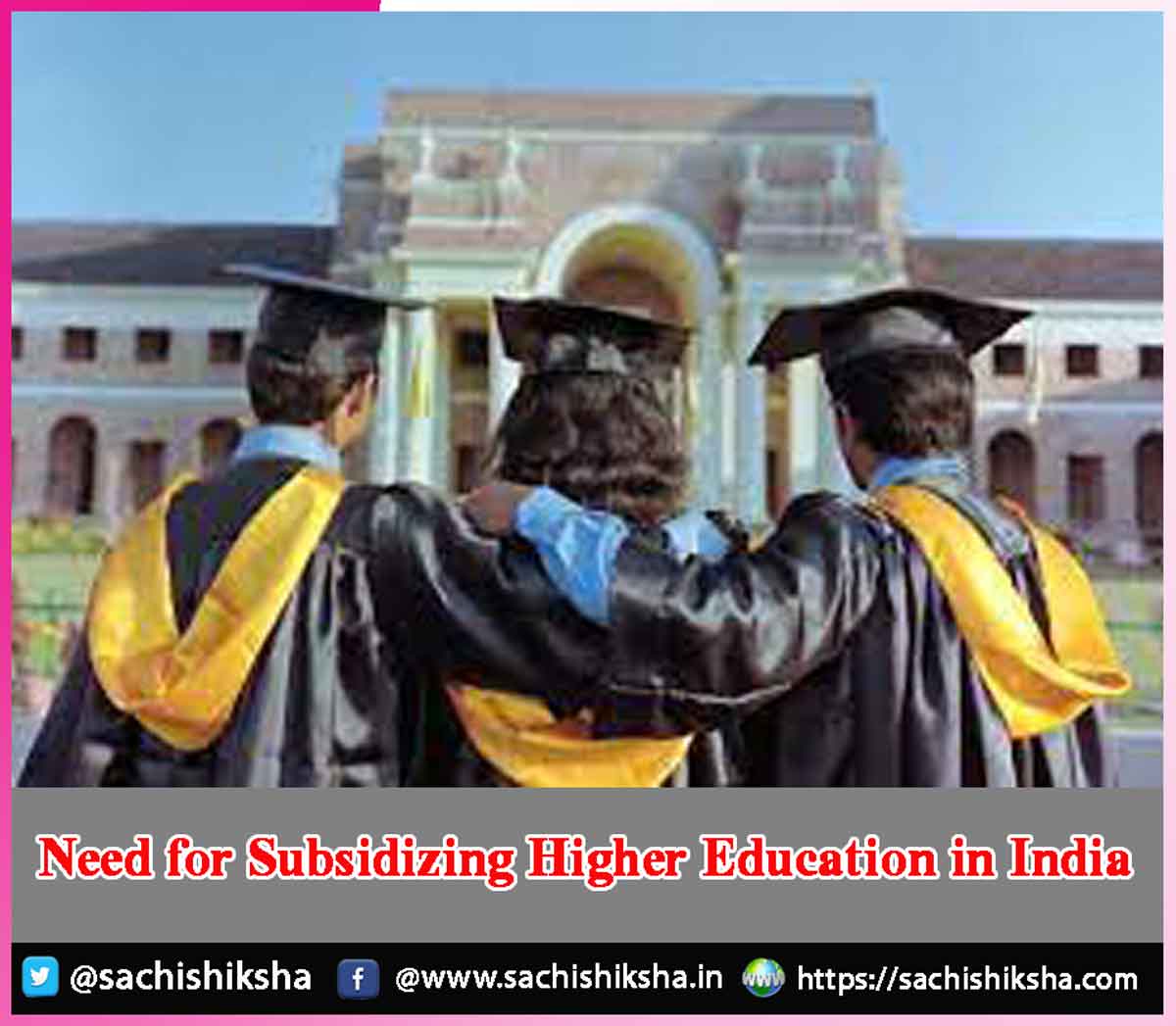Need for Subsidizing Higher Education in India
Introduction: With its vast and diverse population, India stands at a crucial juncture in its quest for socio-economic development. One of the most important factors influencing the intellectual capital of a nation is driving innovation and fostering economic growth.
However, the cost of pursuing higher education in India is a formidable barrier for countless deserving students. In light of this challenge, there is a compelling need for the government to institute comprehensive subsidy programs to make higher education more accessible, inclusive, and conducive to national development.
Table of Contents
Challenges in Access to Higher Education:
Economic Disparities:

Rural-Urban Divide:
The urban-rural disparity in educational infrastructure further compounds the challenges faced by aspiring students. In many rural areas, the need for more quality educational institutions and the absence of essential resources significantly impede higher education. Bridging this gap requires subsidizing education and investing in infrastructure development in remote regions.
Social Barriers:

Benefits of Subsidizing Higher Education:
Enhanced Workforce:
A well-educated and skilled workforce is the cornerstone of economic development. Subsidizing higher education ensures that a larger pool of talented individuals can pursue advanced degrees, contributing to developing a skilled workforce ready to fulfill the needs of a world economy that is changing quickly.
Reduced Social Inequality:
Subsidies have the potential to alleviate social inequalities by making higher education more affordable across diverse economic strata. This approach fosters social cohesion and equity as students from all backgrounds gain equal access to quality education. The resulting diverse workforce can contribute to a more harmonious and integrated society.
Promoting Research and Innovation:
A nation’s progress is intricately linked to its ability to innovate and conduct cutting-edge research. By subsidizing higher education, the government encourages students to pursue careers in research and development. This, in turn, fuels innovation across various sectors, positioning the country as a hub for intellectual advancement.
Global Competitiveness:
In an era of globalization, a nation’s competitiveness is directly tied to the quality of its education system. Subsidized higher education ensures that India produces a workforce that can compete globally. This enhances the nation’s global standing and attracts international talent, fostering a diverse and dynamic academic environment.
Challenges in Implementing Subsidies:
Financial Burden:
Implementing comprehensive subsidy programs poses a significant financial challenge to the government. Striking a delicate balance between providing subsidies and maintaining the financial stability of educational institutions requires strategic planning and a long-term commitment. Adequate budget allocations must be made to sustain these programs over time.
Ensuring Accountability:
An effective subsidy program necessitates a robust framework to ensure that the benefits reach deserving students and institutions. Transparent and accountable systems must be in place to guard against abuse and guarantee that the intended beneficiaries receive the support. Regular audits and evaluations help maintain the integrity of the subsidy distribution process.
Quality Assurance:
Subsidizing higher education should not come at the expense of compromising educational quality. Maintaining and improving academic standards is crucial to ensure that the graduates are well-equipped to handle the demands of the contemporary workforce. Adequate measures, such as accreditation processes and quality assessments, must be implemented to guarantee the continued excellence of higher education institutions.
Role of Government and Stakeholders:
Government Initiatives:
As the primary stakeholder, the government must take proactive measures to institute and sustain subsidy programs for higher education. This involves allocating sufficient funds and formulating policies that address the diverse needs of students across regions and socio-economic backgrounds.
Institutional Collaboration:
Collaboration between educational institutions, industry stakeholders, and government bodies is essential for successfully implementing subsidy programs. This synergy can facilitate the alignment of academic curricula with industry demands ensuring that the graduates are well-equipped for the workforce.
Promoting Research Culture:
Subsidies should extend beyond tuition fees to include support for research and innovation. Encouraging a vibrant research culture involves providing grants, scholarships, and infrastructure to foster an environment conducive to groundbreaking discoveries and advancements.
Community Engagement:
Getting involved with local communities is essential to tackling the particular problems that each region faces. This involves providing financial support, creating awareness about the importance of education, and dispelling myths that may discourage specific communities from pursuing higher education.
Conclusion:
The need for subsidizing higher education in India is not just a matter of educational reform but a strategic imperative for national progress. By dismantling economic, geographic, and social barriers, subsidized higher education can pave the way for a more inclusive, competitive, and innovative society. While challenges in implementation exist,
the long-term benefits, including a skilled workforce, reduced social inequality, and global competitiveness underscore the urgency and significance of this endeavor. Through a collaborative effort involving the government educational institutions, industry stakeholders, and communities, India can harness its human capital’s full potential and chart a course towards sustainable development and prosperity.













































